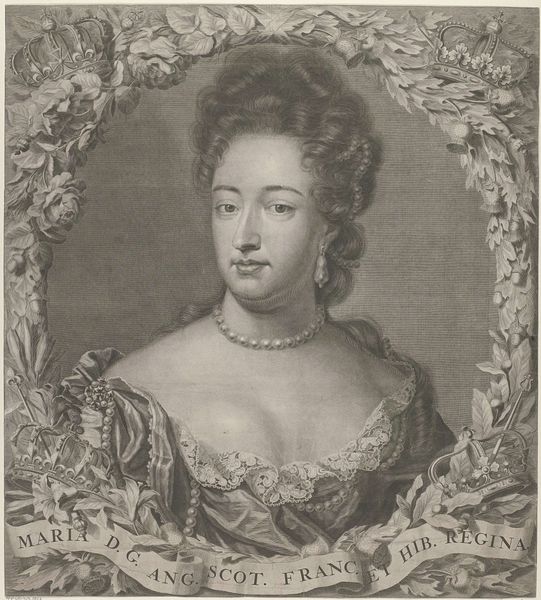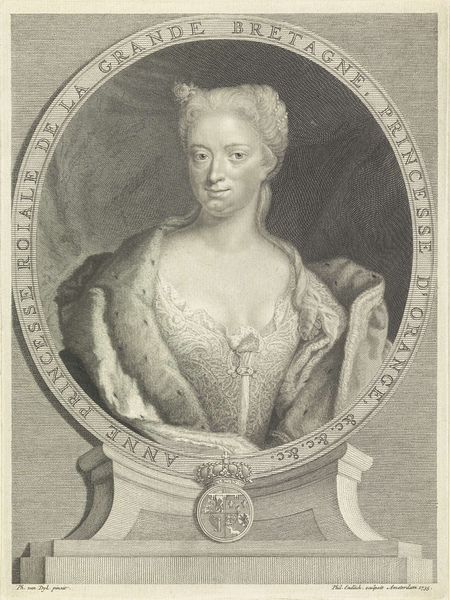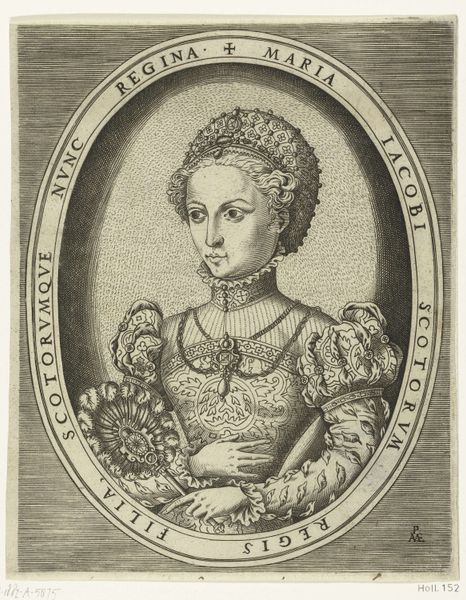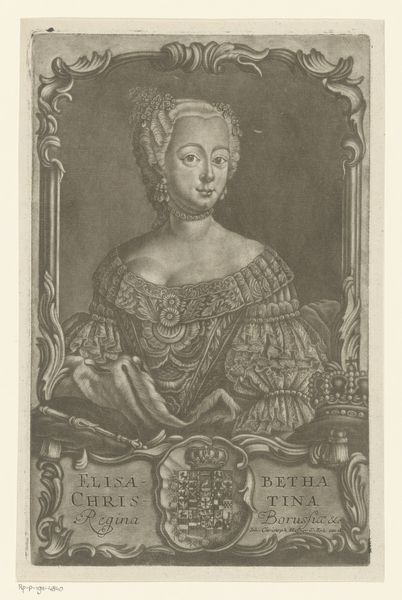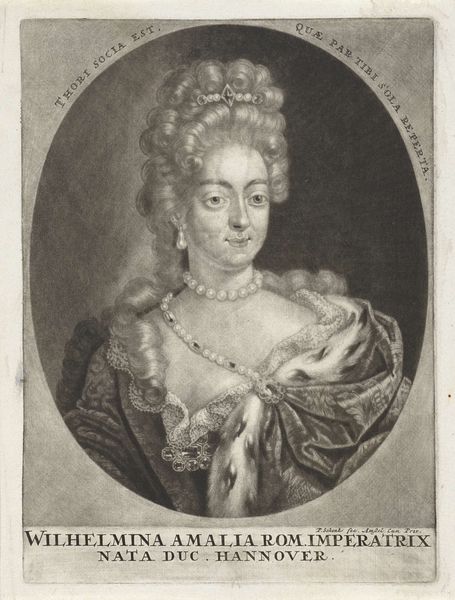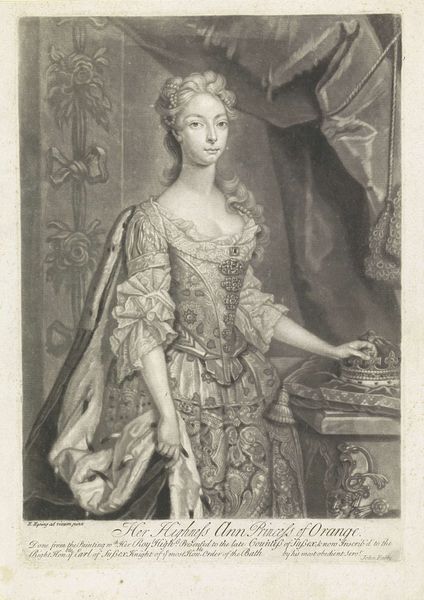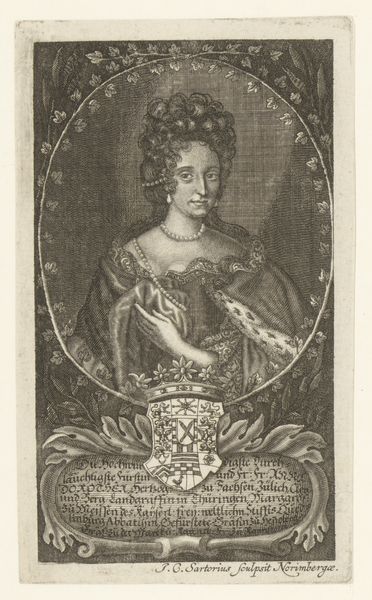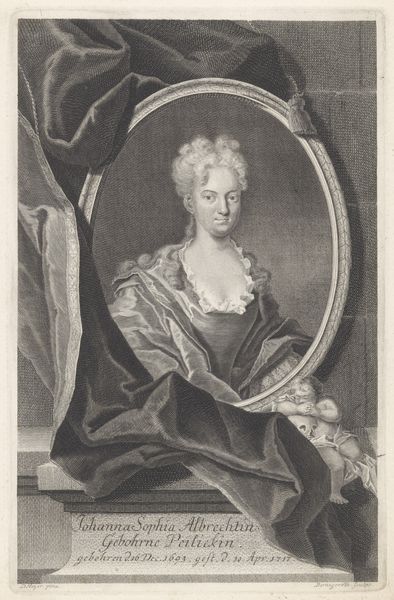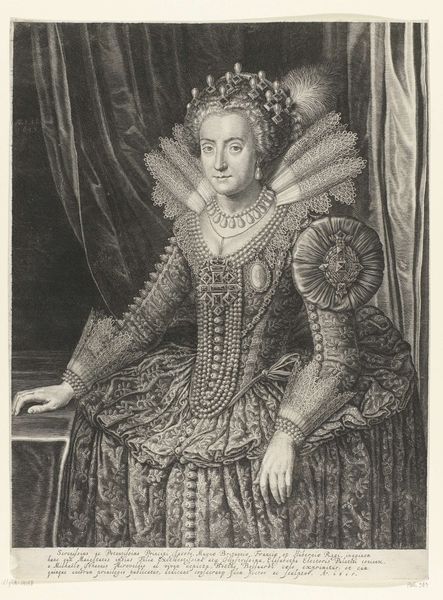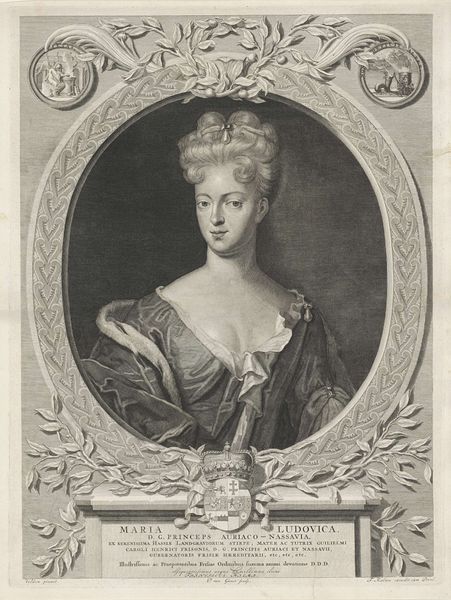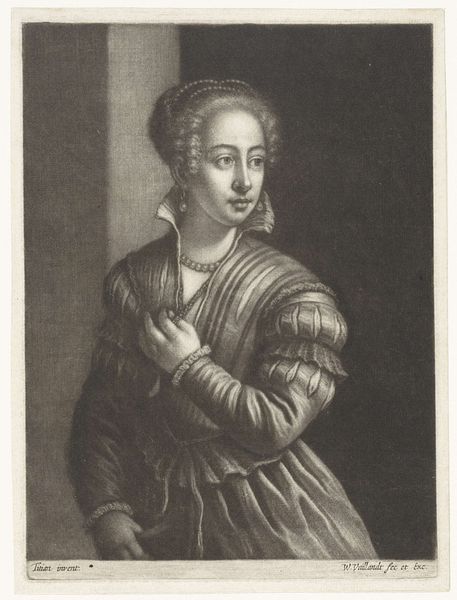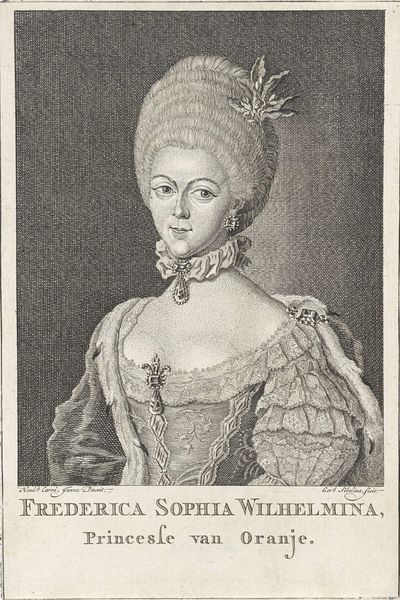
drawing, pencil
#
portrait
#
pencil drawn
#
drawing
#
neoclacissism
#
pencil sketch
#
charcoal drawing
#
pencil drawing
#
coloured pencil
#
pencil
#
history-painting
#
pencil art
Dimensions: height 295 mm, width 194 mm
Copyright: Rijks Museum: Open Domain
Curator: Before us is "Portrait of Wilhelmina of Prussia," an intriguing drawing of indeterminate authorship, currently held in the Rijksmuseum collection. The piece, likely dating between 1767 and 1849, appears to be crafted primarily with pencil. Editor: It’s incredibly detailed for a pencil drawing, almost ethereal. She seems...regal, but with a hint of melancholy in her eyes. Like she's seen some things, you know? And that dress, good lord, the lace detail alone must have taken ages! Curator: Indeed, the attention to detail is quite remarkable. Given the historical context, a portrait like this would have served a crucial function in constructing and disseminating an image of power and legitimacy. It projects Wilhelmina within the conventions of Neoclassical portraiture. Editor: Totally, it's all about projecting an image. I can see the politics dripping off those pearls, can't you? Still, the artist, whoever they were, managed to inject some life in her face; otherwise it could all seem so stale and artificial. I am touched, frankly! Curator: And that tension is, I think, precisely the point. Portraiture of this era exists at a crossroads. On the one hand it served a very specific purpose to affirm power relations, and at the same time, portraiture reflected changing ideas around the self. In many ways the personal was becoming ever more linked to the political. Editor: So it is like a mask? She has a role to play and the painting shows that, plus something more… perhaps something real that leaks out despite the artist and despite her position in the world? Curator: You could argue it that way. What do you think it tells us about the evolving concept of representation, and the expectations placed on royal figures at this time? Editor: To me it says, even princesses feel a bit cornered sometimes. Despite all the fancy attire, she is there, human, somewhere. Curator: I appreciate your artistic interpretation; a nuanced perspective as we consider the enduring impact and influence of imagery and art history. Editor: Well, it wouldn’t be interesting if we both saw things the same way! Always great food for thought.
Comments
No comments
Be the first to comment and join the conversation on the ultimate creative platform.

